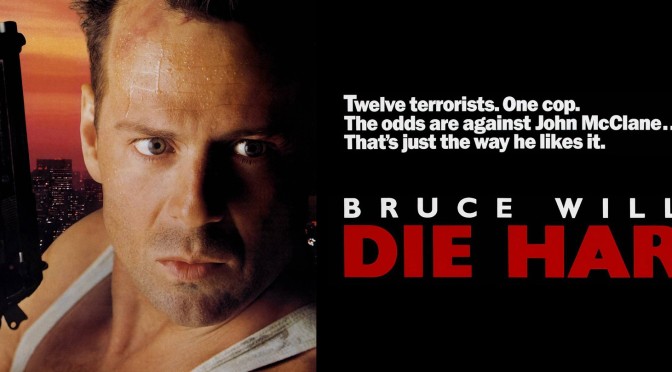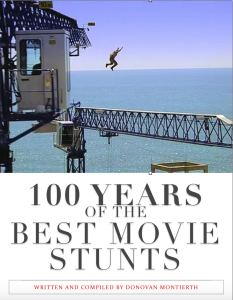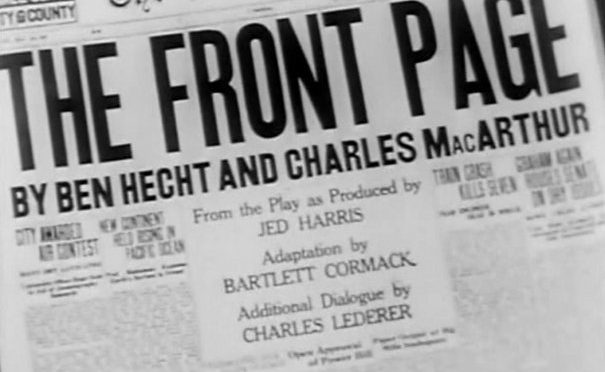Here’s the second action movie with a christmas theme (the first being Lethal Weapon). Both just happened to be hugely successful films and even more successful series. Another example of how successful a film series is, can be based on how many copycats come out after it’s been released. After this film came out, every studio wanted their own, “Die Hard With A…” and they scrambled to make their own films in this genre. High explosive action, and fantastic stunts.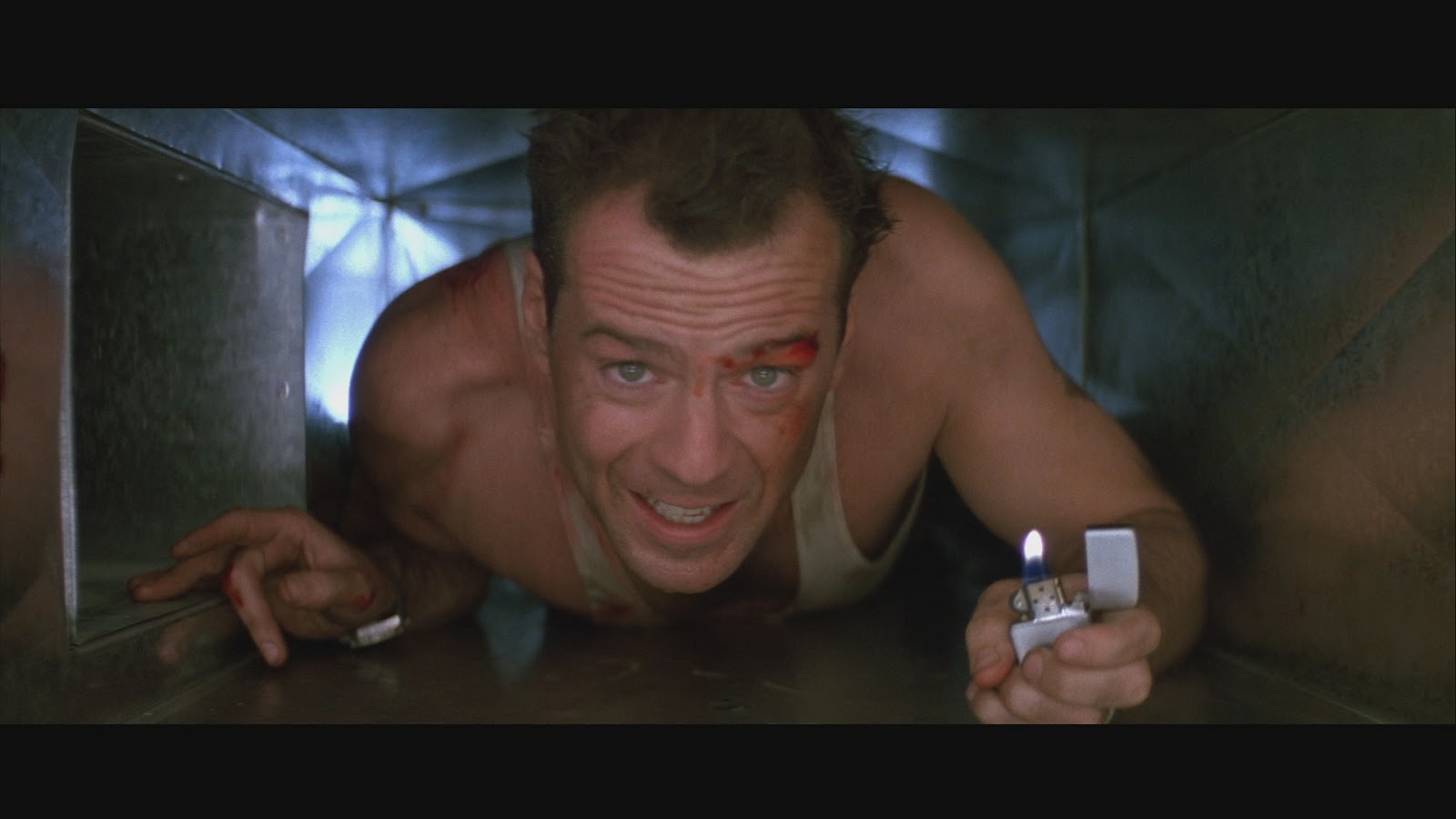
One of the more spectacular stunts in this film, was the one where Hans Gruber falls from the Nakitomi Building. Ken Bates acted as the stunt double for Alan Rickman during the fall. He is also only one of a few stunt performers ever to have won an Oscar for creating safety equipment for the Industry. In 1993, he earned an Academy Award for Scientific and Technical Achievement for his Bates Decelerator System (more on that below), which is used to slow a fall of a stunt performer without the use of an airbag.
An interesting note about the film, it was based on a book by Roderick Thorp entitled Nothing Lasts Forever – a sequel to another book entitled The Detective, which in 1968 was made into a film starring Frank Sinatra. Because of a clause in Sinatra’s contract for The Detective which gave him the right to reprise his role in a sequel, he was actually the first person offered the McClane role, even though he was 73 years old at the time. Also, Coincidentally, Bruce Willis made his movie debut in The First Deadly Sin walking out of a bar as Sinatra walks into it.
Die Hard was directed by John McTiernan for 20th Century Fox.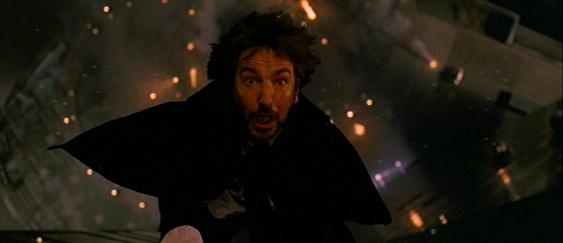
Things to look up (go to IMDB page):
- John McTiernan
- Die Hard
- 20th Century Fox
- Alan Rickman
- Ken Bates
Check out our new Book, 100 Years of the Best Movie Stunts!
Glossary of Stunt Tools: Decelerator or Descender:
Kenny Bates won the Science and Technical Academy Award for the design and development of the Decelerator System, which provides two advantages. First, it allows a stuntperson to fall from much higher platforms. “To back up a little,” Mr. Bates explains, “just to give you an idea of how this came to be, if you date back into the early days of motion picture history, when stuntmen first started doing high falls, they would do it into water, or they would put up two sawhorses and put planks between the sawhorses, and they would actually jump, say, 15 or 20 feet onto these breakaway planks. These are how high falls basically originated.” As falls got higher, stuntmen began to use haystacks, nets, and cardboard boxes. “I’ve heard of stuntmen falling up to 10 stories, or 100 feet, into cardboard boxes. These boxes were actually set up in a configuration to break the fall.” Then came the airbag. “The highest high fall into an airbag is 311 feet. That’s 31 stories.
Most commonly, though, airbags are used for doing falls from, oh, 20 feet up to 150. The most common falls are between 20 feet and 80 feet.” While airbags are great and they’re still in use today, they still leave one problem. Shooting down. With any of these devices, the director must always shoot from the bottom up to avoid filming whatever it is the stuntman is going to land on. What’s where the Decelerator’s second advantage comes in. Since all you’ve got is a cable attached to the stuntman’s ankle, it doesn’t matter what direction you film in.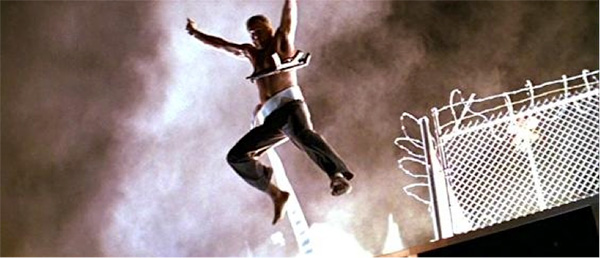
“When we did Die Hard, I started using a device called a Descender, to do controlled falls. In other words, we do a controlled fall from I’ve been anywhere up to 105 stories. The fall is controlled because your descending on a small cable. If the film is undercranked, it looks like you’re falling.” What Bates has done is used his knowledge of physics and film to calibrate the speed of the fall versus the degree to which the film must be undercranked. “In Die Hard, where Alan Rickman dies, falling backwards out of the building, that would have been a death defying feat. Instead we came in and packaged an illusion for Joel Silver. Since then I’ve done every one of his films.” He also doubled Bruce Willis when he leapt off the top of the building with a firehose.

